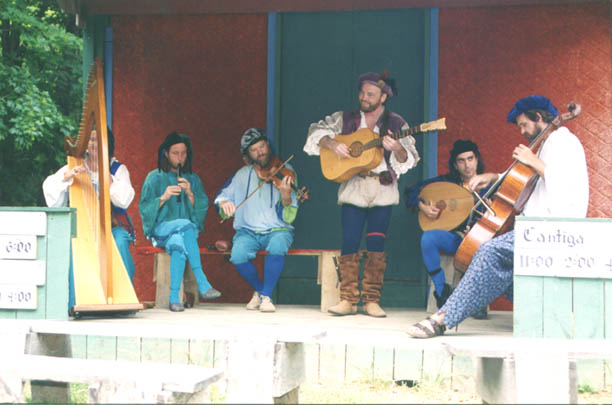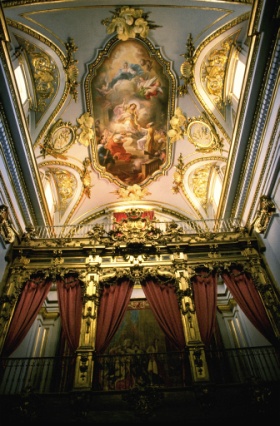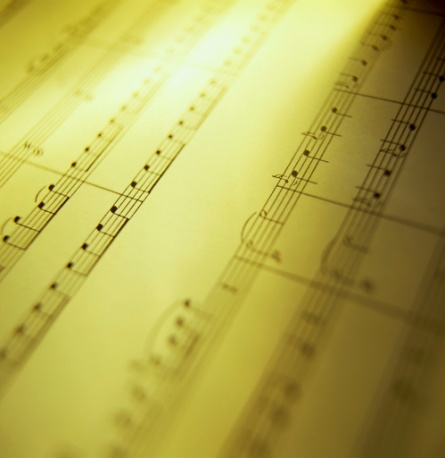
I can’t be the only to have noticed that there’s a distinct lack of interest, especially among our younger students, in ‘classical’ music.
By this, I think we generally mean the music of Europe and North America, from ancient times until the present, particularly pre-1900, but including almost anything written for a choir, orchestra, chamber ensemble or soloist. It’s one of those things where ‘we know it when we hear it’, although definitions vary widely. Simply put, our students aren’t listening much to this kind of music, and for many years I’ve wanted to understand why, and what can be done about it.
What’s on Your IPod?
You might well ask, ‘So what?’ Classical music has a fairly limited relevance to the Internet generation. It’s used in movie soundtracks and in commercials, and still crops up at weddings and other formal occasions, but what do Haydn, Mozart and Beethoven have to do with life in 2015? Pop music, by its very name and definition, has a central place in our students’ listening; other areas, including metal, electronica, ‘alternative’ and the host of categories which have sprung up in an attempt to define what we’re hearing, hold pride of place on our students’ IPods, and that’s only to be expected. But why has this happened to the exclusion of classical music? After all, there’s an enormous amount of it – well over a thousand years, in fact – and it comes in a variety of forms, genres and styles which would confound even the most dedicated attempts at categorization.
The Problem
Basically, I believe that classical music has become seen as elitist, difficult to enjoy, and dependent on a patience and dedication which few are prepared to commit. There are grains of truth here; the grand opera and the symphony orchestra were, for many generations, the province of the One-Percenters, and though this has changed, the symbolism of the concert hall and opera house remain peculiarly upper-class. Some classical music places stern demands on the listener; a good deal of modern classical music, for example, would empty a high-school auditorium in five minutes flat. Add to that the fact that most classical pieces are substantially longer than the two hundred and thirty seconds or so we’re detained by the average top-40 pop song, and there’s no wonder our students feel themselves unprepared for the challenge. I get it. I truly do.
The Implications
That said, our students’ rejection of classical music is a terrible shame. It is a waste of uncountable and wondrous opportunities to enrich their human experience. Such opportunities are may be difficult to grasp, and for a host of good reasons, but with a little guidance and patience, the treasure house of classical music can be opened to everyone. The good news is that bringing classical music to young people has never been easier, and that doing so can fit very neatly and usefully into the ESL context. Here’s how you might go about it.

7 Great Ideas to Bring Classical Music to ESL Students
-
1
Engage and Ask for Opinions
There’s a terrific vocabulary exercise which I think every ESL teacher should try. Walk into the class and simply write, ‘What Is Music?’ on the board. The torrent of vocab and opinions which will likely follow will prove a solid starting point; everyone has views on what music is (and, equally importantly, is not) and you’ll begin learning about your students straight away as they share their thoughts. A good way is to organize the students into groups and have them compose a one-sentence answer. It will take time, but the debate and its outcome are often very valuable.
A good working definition, which has been around at least since the works of John Cage and others, is this: Music is organized sound. It’s as simple as that. If the sound has had an organizing principle applied to it, then that sound has become music.
So, by that token, is birdsong music? Does the organizing principle have to be created by humans? Is the sound of a car engine revving also music, because it’s being organized by a mechanical process? What about a modem starting up (if you can still remember those!) or the sound of a child jumping into a swimming pool? Ask your students about these things. I’m often surprised by the variety of opinions and the strong viewpoints I hear. And this is an excellent starting point for learning about music itself.
-
2
Ask for Experiences
Everyone connects music to life events, feelings, memories and dreams. Movies would be incredibly diminished where there no classically-inspired soundtrack; and if your students insist that movie soundtracks aren’t classical music, then put Star Wars and the Rite of Spring side by side, or the string music of Ralph Vaughan-Williams and the score from Shawshank Redemption. Danny Elfman, James Newton Howard, (the late, lamented) James Horner, the great John Williams, all were classically trained, often with a good deal of jazz thrown in.
What have your students heard? Where and when? From their national anthem, to wedding marches, to the music played at their graduation, everyone has heard and (one can guess) basically enjoyed some kind of classical music in their lives. Doing so doesn’t make you a snob; it doesn’t mean you’re rejecting your parents’ left-wing values, or embracing the music of the aristocracy. It just means you’ve got your ears open, which is a tremendous human virtue.
-
3
Take Things Slow
Yours students aren’t going to become experts or aficionados immediately; what we’re aiming for is to raise their awareness of what exists, and that it’s freely and easily available. For some, this might end up having to be a private pursuit; I was teased at high school for eschewing Oasis and Blur in favor of 16th century music. It just didn’t interest me, but that wasn’t the point; I was seen as being high-handed and deliberately rejecting what was popular because I wanted to look different. In truth, I just loved 16th century music, and still do. And, just for the record, I cherish the Beatles’ entire output, perhaps because I’ve done three music degrees and have learned to recognize true quality when I hear it.
-
4
Decide Your Approach
It probably won’t be enough to play a piece of Bach in your classroom, wait until the end of the recording, and then say, “There, wasn’t that nice?”
Enjoying music to its fullest does involve some thought. It necessitates a personal search, an inquiry into what governs our responses to music and other aesthetic inputs. From the ESL standpoint, we’re always looking for ways to encourage the production of language; music depends on a passive receptivity and sitting in silence, so we need to move quickly to an active response. This may be as simple as asking, “What do you think?” but you’ll probably achieve more by asking specific questions:
- Who do you think this was written for?
- What kind of occasion would be suitable for this kind of music?
- How many people do you think were playing on this recording? Ten? Fifty? Two hundred?
- What emotions could you associate with this piece?
- What time of day might it be best to listen to this piece?
- Did you visualize anything while listening? An image, a person, a narrative, a world?
- How long do you think this piece took to write?
- What would you say is the value of this music? Could it be called a ‘masterpiece’?
Inviting student opinions is the first step. The next might be to broaden the exercise to invite written responses, and here, the sky is the limit. Essays could answer any of the above questions; the students could spin out their visualizations until they create a whole short story; or they could do a little historical research and try to tell a fictionalized version of the piece’s first performance, back in the 16th or 19th century.
-
5
Bring in Helpful Vocabulary
Music can be very difficult to describe; in this way, it’s in the same category as taste or sensation. Help your students with some vocab guidance:
Voice /Line: A continuous group of sounds made by one player or group or players. Melody: A tune or theme. The most important voice in the piece. Notes: Individual sounds. Chords: Combinations of notes. They could be major or minor – happy or sad. Harmony: Chords of different characters/feelings which are underneath the melody. Texture: The feel of a combination of instruments. It might be thick, thin, sparse, dense... Imitation: A kind of conversation, exchanging musical ideas between different voices. Monophonic: Single-line music; often very simple and ancient Polyphonic: Several lines playing together; often complex, imitative or dense Beat / Pulse: Rhythms which makes you tap your foot It’s also helpful to have a family of descriptive adjectives to make use of:
Texture: Plain, Simple, Boring, Uneventful, Complex, Dense, Busy, Full, Cluttered Style: Happy, Dance-like, Up-tempo, Down-tempo, Slow, Steady, Ponderous Purpose: Sacred/Religious, Secular/Non-religious, Celebratory, Funereal Emotions: Delightful, Exciting, Stirring, Energizing, Surprising, Shocking -
6
Bring in Some Knowledge
It will help your students if they can divide classical music (which, after all, spans the last thousand years) into smaller categories. Here are the typical divisions, along with very generalized descriptions of the music you’d expect to hear from that period, and some links to pieces you might play for your students:
 Mediaeval Music (c. 1000 – 1450)
Mediaeval Music (c. 1000 – 1450)
Simple lines of vocal music are typical of this period. The earliest surviving, notated pieces were for the church; the new university of Paris was important, as was the great church of Notre Dame. Later in the period, two lines were performed together, and they became increasingly complex. Composers wrote either for religious reasons or for the general public, who enjoyed love songs, political satires and ancient legends. This music is generally seen as peaceful and calm. Leoninus, Perotin and Adam de la Halle were mediaeval composers. Renaissance Music (c. 1450 – 1600)
Renaissance Music (c. 1450 – 1600)
Three or four lines of music were common during this time. We have the beginnings of the kind of harmony we would recognize today; not just two lines copying each other, but chords of three or four notes. Melodies were also becoming modernized so that they had a rising and falling pattern, a beginning and an end. A lot of religious music was written during the Renaissance, but also the first big collections of dance music were published. Palestrina, Victoria and Dufay were all Renaissance composers. Baroque Music (c. 1600 – 1750)
Baroque Music (c. 1600 – 1750)
Harmonies became more and more standard, and each piece came to have its own key, a harmonic home to which it would always return. Melodies expanded and became more lyrical and emotional. Many musical instruments were developed and perfected during this period; the piano was invented, the violins became stronger and more capable, and brass instruments dramatically changed. Bach, Handel, Biber, Vivaldi, Purcell and Telemann were Baroque composers. Classical Music (c. 1750 – c. 1820)
Classical Music (c. 1750 – c. 1820)
Classical melodies are less complex, and the harmonies move more slowly. This makes the music easier to enjoy; it is less complicated and has a very clear structure which the audience can follow, so they always understand the geography of the piece. Solo instruments were popular, especially when accompanied by an orchestra – violin and piano concertos were written in large numbers. Mozart, Beethoven, Haydn and CPE Bach were composers of the Classical era. Romantic Music (c. 1820 – c. 1900)
Romantic Music (c. 1820 – c. 1900)
Literature became a very important influence on music during the 19th century. More complex subjects were discussed, including psychology and the darker parts of human nature. Harmonies became more complicated, able to carry a wider range of emotions, and melodies became stretched and less based on a formula, also in the service of emotion. The orchestras of this period were much bigger than before, and the Symphony became the largest and most popular work. Mahler, Bruckner, Tchaikovsky and Berlioz were composers of the Romantic period. Modern Music (c. 1900 – present)
Modern Music (c. 1900 – present)
After 1900 there was a massive growth of new musical thinking. The old systems of harmony were broken down, so that composers didn’t need to follow their rules. The results were a huge variety of styles, techniques and audience reactions. Some people find 20th century music very difficult to listen to, because it does not have traditional harmony or melody; other people try to keep their ears open and accept new things, even if they don’t always understand the reasons behind it. Richard Strauss, Philip Glass, John Adams and John Williams were, or are, 20th and 21st century composers. -
7
Encourage Listening
An introductory lesson like this is a great place to start, but a genuine love and appreciation for music – of any kind – comes only through repeated listening and personal exploration. Encourage your students to keep their ears open, to try new things on ITunes, Spotify, or YouTube, and to experiment fearlessly. Ask them to report back about interesting findings, and perhaps even organize a class trip to a concert, or invite a musician to visit your school and speak about their career.
I hope this introduction helps bridge some gaps, and allows you to bring to your students the remarkable treasures of classical music.
It won’t be for everyone, but in every group I’ve worked with, there have been several students who have later been very grateful for being guided through the initial steps of understanding and enjoying this music.
P.S. If you enjoyed this article, please help spread it by clicking one of those sharing buttons below. And if you are interested in more, you should follow our Facebook page where we share more about creative, non-boring ways to teach English.







